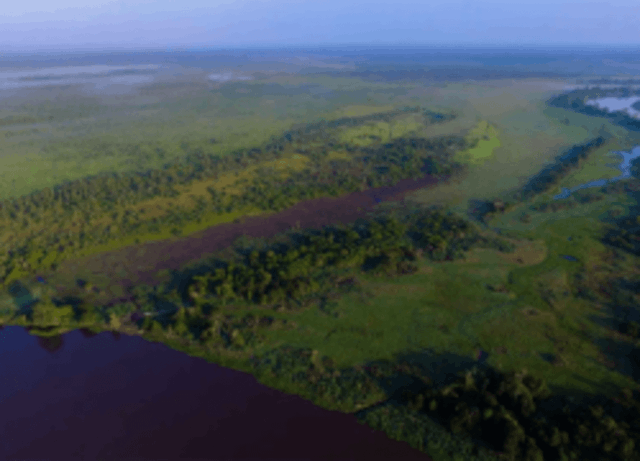Go the extra mile
Towards a cooler planet
My take on COPOUT26: some progress has been made, but we are still on a catastrophic trajectory
The tears of disappointment in the eyes of president Alok Sharma during his final speech summed up the emotional rollercoaster that has been COP26.
As a New Zealand business delegate at COP26, I’ve met and worked with some amazing people during the event. Behind the scenes, it’s been truly inspirational to see the efforts that have gone in, the negotiations that ran into the early hours of the morning and what people are doing in their own ways to help change the catastrophic trajectory we are on.
Ultimately, though, the measure of COP26 comes down to commitments and numbers. By 2030 we need a 45% reduction in Greenhouse Gas Emissions to see us on target for only 1.5 degrees of human induced global warming. Instead we are facing a 13% increase, according to the outcomes of COP26, translating to 2.4 degrees of global warming. These ‘pledges’ (now referred to as the ‘Glasgow pact’) mean very little if past COPs are anything to go by.
There have been pleasant surprises, like the US-China climate pledge; disappointing surprises, like India backing out at the 11th hour of the phase-out of coal deal (40% of global emissions are from coal), which was very sneakily supported by winks of approval from US & China; and everything in between. Perhaps most concerning is the lack of accountability stemming from ‘reduced language’ around coal and fossil fuel goals. This gives licence for a “COP-out” of meaningful reduction plans.
Article 6 and the carbon market
Left unresolved from the previous summit, Article 6 of the Paris Agreement — which sets out the regulations for international carbon markets — was set to be one of the key outcomes at COP26. Finally, at the close of the summit, the rulebook was approved.
The new rulebook puts in place minimum requirements to set up a carbon crediting scheme and it is likely we will see a boom in volume of credits entering and trading on both international and voluntary carbon markets as a result. This is driven in part by a distinction in Article 6 that separates out the emissions reductions that are an outcome of a country’s obligation under the Paris Agreement and “other international mitigation purposes”, meaning the use of carbon credits by the private sector for offsetting purposes.
The Paris Agreement (and subsequently Article 6) has a legal force and is a seriously powerful document. But, it can only be accepted by consensus of all parties. We don’t want to risk losing signatories from it altogether either, as Trump did when he came into power. This means that it is also a document of the lowest common denominator.
Most nations worked hard throughout COP26 to raise the bar on these minimum commitments. As a result, much of the language around Article 6 has been tightened so that countries can either be held to account, or given clear direction that they will soon be, over the quality and accuracy of carbon credits traded.
Even so, there remains clear resistance by countries wanting to be seen as good global citizens who are actually advocating for weak and ambiguous language: translating to almost zero accountability.
The aim was to sign everyone up to a path that limits global warming to 1.5 degrees. Instead, our collective pacts, including Article 6, limit it to 2.4 degrees. This may seem minimal, but at a global ecosystem level it is catastrophic.
Coal commitments and India’s withdrawal
By far the biggest let down, coming at the event’s eleventh hour, was the change in language by India on coal commitments from ‘phasing out’ to ‘phasing down’.
We can only hope there is a tangible improvement built on this at COP27 as ‘phasing down’ means, to me, ‘no need for any meaningful action’. Coal represents 40% of global emissions and the three biggest emitters in the world (China, USA and India) must show stronger leadership than this. With China and the US also not lobbying India to stick to stronger wording, they too are showing tacit support for the reduced commitments.
This brought a series of protests from the Environmental Integrity Group, the European Union, Liechtenstein, Mexico, Fiji, Marshall Islands and AOSIS. Speaking for the EU Commission, Executive Vice President Frans Timmermans said that the agreement the EU and others had forged with South Africa earlier during the summit should be the template of how we help other coal producing countries to rid themselves of this fossil fuel.
Despite the disappointment expressed by these Parties and groups, the amended text was approved, along with decisions on Article 6 and the CDM. The COP then proceeded to approve the full agenda of items, and formally closed at 11:30pm on Saturday 13 November. Better than the usual 1–3 am daily finishes we’d come to expect over the past few weeks.
The role of business in reductions, and the voluntary carbon offsetting market.
There are some clear short and medium term outcomes we can expect for the carbon offset market as a result of COP26.
First of all, there will be a short term price-down pressure by the greenwashing nations and businesses looking for cheap credits, as old ‘CER’ credits from 2013 under the CDM (Kyoto) — sometimes referred to as ‘zombie credits’ — are considered valid for trading between countries looking to meet their NDC targets (‘Nationally Determined Contributions’ meaning commitments).
There is also a huge opportunity with the voluntary carbon market that really excites me. Consumers are the ones driving change here, and businesses are responding. Businesses are choosing ethical ways to reduce and offset their emissions and in doing so, they are sharing the stories that build strong loyalty among their customers. This loyalty is so strong, in fact, that consumers are not lured away by discounts and counter offers of sustainability by competitors who act later.
In the business world, we’re seeing strong business supported advocacy groups emerging. I’ve met with the WBCSD (World Business Council for Sustainable Development), the EDF (Environmental Defense Fund), IETA (International Emissions Trading association) and WWF (World Wildlife Fund), who are all working towards the same goal, and the stars are aligning between many of these organizations who are collaborating in this space.
Some of the many positive outcomes
The best outcomes yet are the Carbon Credit Quality Initiative by WWF, EDF, and Oko Institut. They present a plan to deliver independent, user-friendly scorings for the quality of carbon credits, creating clear path for project developers and carbon crediting standards to improve.
Another great launch is the International Aviation Climate Ambition Coalition (IACAC — I know, it’s a mouthful), with 23 countries already signing on (including NZ) to raise the commitments and standard on offsets used to meet aviation pledges such as CORSIA. We are seeing organizations like ICAO and WWF working together here also for greater impact.
I won’t go into them all here, but to name just a few of the groups and pledges made outside of government this COP:
• The Glasgow Leaders’ Declaration on Forests and Land Use
• Just Energy Transition Partnership
• International Aviation Climate Ambition Coalition
• Accelerating the Transition to 100% Zero-Emission cars and vans
• Clydebank Declaration for Green Shipping Corridors
• The Glasgow Financial Alliance for Net Zero
• Global Coal to Clean Power Transition Statement
• US-China Joint Glasgow Declaration on Enhancing Climate Action in the 2020s
What can we expect next?
Between now and the next COP, there will be much work ahead, including Saudi coming to the party on oil & gas (conversations it diverted craftily to coal this time around), social aspects (Indigenous rights, gender equality, loss & damages, finance for developing nations), and of course lobbying China, the US and India to return to the initial commitments of a “phase out” of coal.
With a number of pledges to resolve some of these issues within 12 months, I’m not hopeful our elected governments will serve us well enough alone. Since COP began, global emissions have risen 20%, with record growth expected this year.
The only way forward from here is for leaders in business, industry, agriculture — and all consumers — to drive this planet in the direction it needs. It’ll take new thinking, internal carbon pricing and budgets, it’ll take consumers saying no to some of their habitual choices, and instead being more conscious about each decision.
Offsetting will play a critical role in helping to quickly resolve climate, social, and biodiversity outcomes that haven’t been addressed this COP, while we all collectively continue to reduce consumption and emissions, and innovate alternatives. I thank all the amazing people I’ve worked with here and met during the event, it’s truly inspirational to see the efforts that have gone in, the negotiations into the early hours of the morning, and what you’re doing in your own ways to change this course.
17 South Street
Auckland 1010
New Zealand
[email protected]
Sign up. Be inspired. Get clicking.
Subscribe now to stay up to date with CarbonClick, carbon offsetting and climate action.
By signing up you agree to our Privacy Policy.



